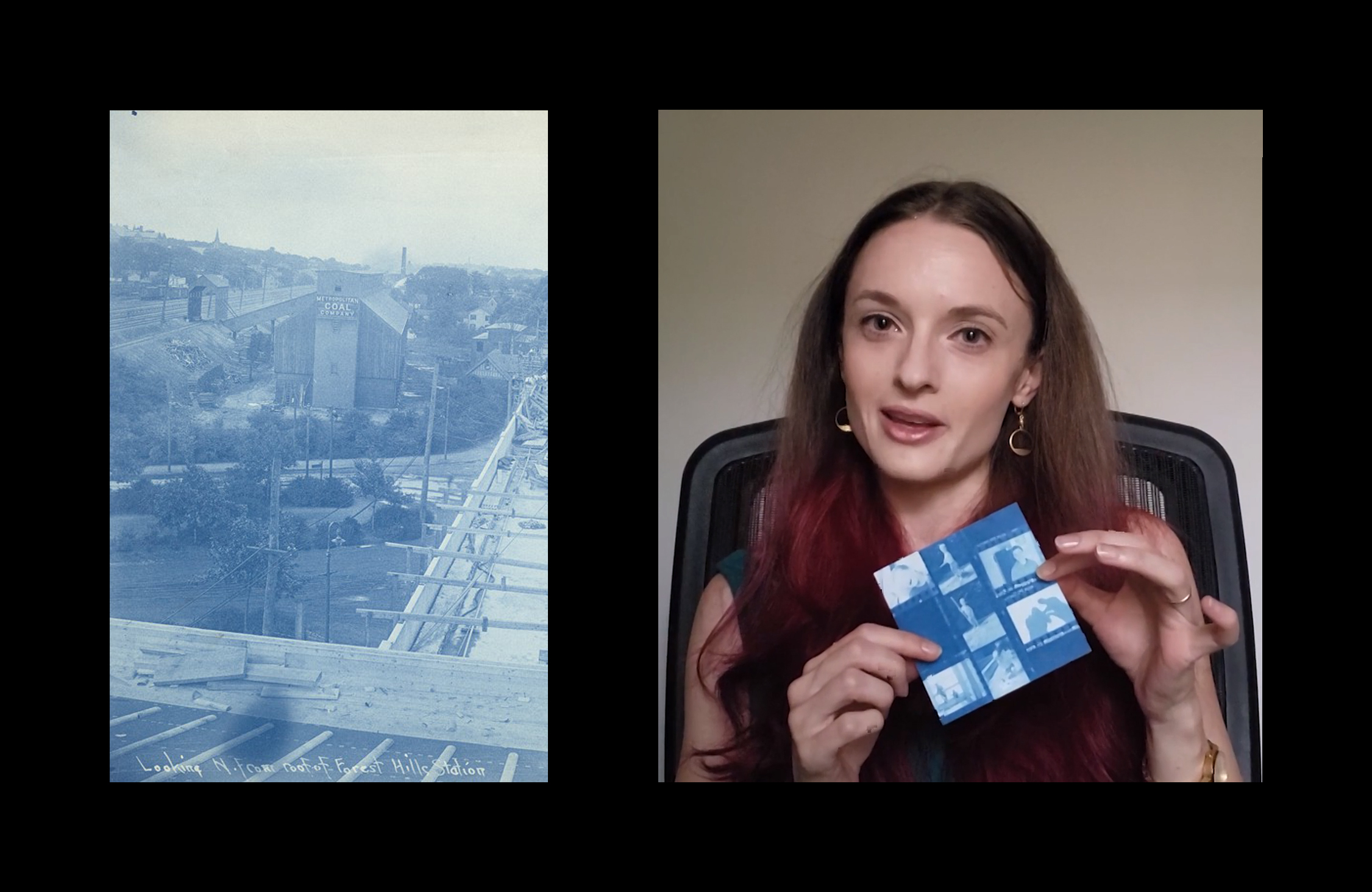Conservation scientist Julie Wertz talks about the science and process of cyanotypes, also demonstrating how you can make one at home.
This video is part of our Art Talks series, in which our team of curators, conservators, fellows, and graduate students share short, informal videos that offer an up-close look at works from the collections.
Speaker:
Julie Wertz, Beal Family Postgraduate Fellow in Conservation Science, Straus Center for Conservation and Technical Studies
Works explored:
Prussian Blue Pigment, Manufactured by F. Weber & Company, Inc., 1927. Harvard Art Museums, Straus Center for Conservation and Technical Studies, Forbes Pigment Collection, Straus.6.
Paul Rowell, American, Looking N. from roof of Forest Hills Station, July 19, 1909. Cyanotype. Harvard Art Museums/Fogg Museum, Transfer from the Carpenter Center for the Visual Arts, Gift of the Massachusetts Bay Transportation Authority, Boston Transit Collection, 5.2002.696.
Housing, Industrial: United States. New York. New York City: Methods of Cheap Construction of Dwellings: Semi-Detached Two-flat Houses of Hollow Tile Construction: House No. 390. Standard Buildings Inc., Seventy East Fourty-Fifth St. New York City, 1913. Cyanotype. Harvard Art Museums/Fogg Museum, Transfer from the Carpenter Center for the Visual Arts, Social Museum Collection, 3.2002.1967.
Sheila Pepe, American, Photogram Projection B. 4, 1998. Cyanotype with black ink and black and gray wash over a cyanotype on white wove paper. Harvard Art Museums/Fogg Museum, Margaret Fisher Fund, 1999.111. © Sheila Pepe.
Anna Atkins, British, British Algae Cyanotype Impressions, 1843. The New York Public Library, Spencer Collection. The New York Public Library Digital Collections, 1843–1910.



